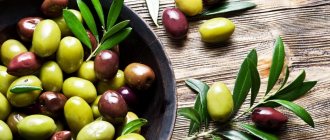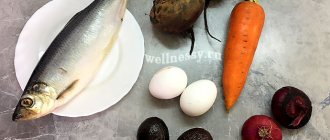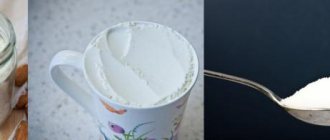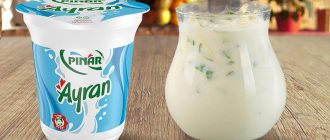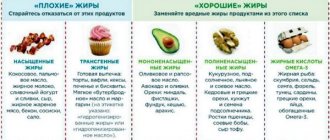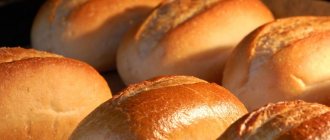Research shows that almost half of Europeans do not read labels on the products they buy. Have you looked at what is written on the packaging of your favorite sauce, yogurt or even bread? Sometimes you can read very unexpected information there.
Choosing healthy and natural products is not an easy task. In recent decades, there has been a noticeable increase in interest in a healthy lifestyle and healthy food in the world, and marketers are taking full advantage of this “weakness” of consumers. Advertising convinces us that this particular product is “the most natural”, “without preservatives”, “rich in vitamins” and “low-calorie”. How to check the quality of a product by its label and how to find out how much truth there is in advertising slogans?
General requirements for product labeling
Content:
- General requirements for product labeling
- Mandatory information on the label
- How to understand what a product was made from
- How to decipher the nutritional value of a product
- What to pay special attention to when reading the label
- What do the additional inscriptions on the label say?
- Pasteurized and sterilized: which is better?
- What's in the picture
All countries have strict requirements for food labeling. This is done to protect the buyer. Another question is that not all consumers know exactly what, how and where manufacturers should indicate about their product.
The first reason why many are hesitant to read labels is that the font is very small. And at the same time, buyers often do not even realize that unreadable labels on the product are a violation on the part of the manufacturer. According to legislation (not only Russian, but also other countries), labeling on products must be easy to read and not mislead the buyer. Secondly, all markings are applied in a color contrasting with the background. Thirdly, text and special symbols must be applied with high-quality paints and not be erased during the entire shelf life of the product.
Label appearance
Purchasing packaged food is preferable to bulk, since in this case you can get acquainted with important information: determine freshness, read the composition. All inscriptions on the label must be in Russian (other languages are at the request of the manufacturer). There are no prohibitions regarding the color scheme, the main thing is that the background and letters are contrasting, do not merge, and the text is readable.
The label must be glued evenly, without signs of wetting or bleeding, and the packaging must be intact and without damage. If there are two stickers on a product, then the information on them should not contradict each other.
Do not confuse the “original” label from the manufacturer with the date of manufacture (it is the primary source of information) with a sticker pasted by the supermarket at the time of weighing the goods in the store.
Mandatory information on the label
Directly on the packaging there should be information about the name of the product, its expiration date and storage conditions, as well as the presence of components that can cause allergies. The remaining information can be placed on an additional leaflet (if the packaging area does not allow for all the statements to be placed). In addition, from a properly designed label, the consumer can find out the quantity of the product in the package, its composition and nutritional value, as well as obtain information about the manufacturer and packer. The packaging itself should have a pictogram in the form of a glass and fork. This designation ensures that the container is made of material intended for storing food.
Product name
The name of a product is not its name at all, as some may think. According to the rules, the name must clearly and reliably characterize the product, indicating only those components that are included in its composition. That is, based on this information on the label, the buyer should understand what kind of product is in front of him.
For example, the name “raspberry yogurt” indicates that the product contains berries (whole or chopped). If the composition contains appropriate flavorings or flavoring additives instead of natural raspberries, then this should also be reflected in the name: “yogurt with the aroma (taste) of raspberries.”
In meat products, everything should also be clear. For example, “homemade cutlets” is not a name, but the name of a product. The correct name should sound something like this: “semi-finished product formed from minced broiler meat.” In meat products, this label item must indicate from what grade and type (chilled, ice cream) raw materials the product is made.
Quantity
A properly designed label should contain information about the amount of product in the package (in g/kg, ml/l or pieces). If the container contains a product immersed in liquid, the manufacturer must indicate the mass with and without liquid. As an example, you can take mozzarella cheese in brine. The correct label will indicate the number of cheese balls in the package, the weight of each of them and the total weight of the product with liquid.
Compound
This is perhaps the most interesting and most important part of the label for the buyer, which we will talk about in more detail a little later. In the meantime, let us remind you that in the list of ingredients the components should be listed in descending order of their mass fraction in the product. That is, the finished product always contains more of the ingredient that is mentioned first in the list.
The nutritional value
Canadian researchers have calculated that people who pay attention to this label column weigh on average 4 kilograms less than those who are not interested in the energy value of purchased food. What characteristics of a product, in addition to calories, should be indicated on the label and what they can tell about the nutritional properties of the product, we will consider in more detail in the following sections.
Expiration date and production date
For products whose shelf life does not exceed 72 hours (for example, bread), the date of manufacture must be indicated in the format: time, day, month. If the shelf life of the product is from 72 hours to 90 days, then the manufacturer can use the format: date, month, year. Only the month and year of production can be indicated on food products whose shelf life exceeds 3 months.
Manufacturer information
In addition to the manufacturer's name, the correct label must also include its address. Moreover, if the company is officially registered at one address, and the production building is located at another, then both must be on the packaging. The same rule applies to imported goods.
Truth or publicity stunts?
- “Low-fat” - according to the logic of things, having seen this mark on a bright package, a person, especially one who watches his figure, reaches for such a product, because since it is low-fat, it means it contains fewer calories, which means it can be eaten in larger quantities. No matter how it is! Let's figure it out and carefully study the labels of goods with and without a “stamp.” Yes, indeed, a low-fat product contains less fat than a regular product, but pay attention to the calorie content, for some reason our miracle low-fat product contains much more calories. Surprised? Let's figure out why. Paying attention to the amount of fat, we often forget to look at how things stand with carbohydrates, but they are the whole secret. A product containing a small percentage of fat becomes bland and is not so actively accepted by the body. Sales are falling, how to get out of the situation?! Our enterprising manufacturers have found a way out of this; they replace the fat content of the product with carbohydrates, in the form of sugar and other sweeteners, to make the product tastier, while crossing out their “low-fat” name. And if you carefully read the article, then the effect of carbohydrates on the body, in particular fast carbohydrates, was presented above.
- “No sugar” - when seeing such a product, people with a sweet tooth are simply delighted, because everyone knows that sugar and its derivatives make you gain weight much faster than other products. But do not rush to buy such a product, but carefully study the label. Non-sweet, bland goods are unlikely to be actively purchased; manufacturers have taken care of this too. In small print, somewhere in a secluded corner of the label, you can find the composition of such a product. And there will certainly be included various kinds of sugar substitutes, which completely excludes the fact that the product has become low-calorie and healthy; on the contrary, the use of such products can cause poisoning, disruption of the cardiovascular and respiratory systems, and also provoke the occurrence of cancer.
- “No cholesterol” - recently this slogan has often been assigned to vegetable oil labels, and in principle this is not a hoax at all, it’s just that not many people know that cholesterol is contained only in products of animal origin, so manufacturers raise the level of sales by assigning such slogans. Therefore, labels need to not only be read, but also analyzed what you read.
- “No GMOs” - this inscription is very common, sometimes to the point of being ridiculous, when found on bottles of drinking water or even on toilet paper. The consumption of genetically modified products should be reduced or completely abandoned. A large concentration of GMOs is found in chips and other similar potato products, canned food, tomato sauces and ketchups, as well as in fast food. GMOs can be found in soybeans and products containing it (in some sausages, pates, semi-finished products, etc.). Without a doubt, soy is very healthy, but it is often subject to genetic modifications, so you should treat it with caution; most often it is indicated in the product as “vegetable protein,” so carefully read the composition of the product.
Now you are familiar with the basic rules for choosing a particular product; when going shopping, don’t rush to put everything that catches your eye in the basket, stop and carefully study the label, because your health and, of course, your figure depend on the choice of product. Choose only quality products!
How to understand what a product was made from
Order matters
To understand what a purchased food consists of, you need to carefully study the list of ingredients, which is a mandatory element of the labeling. But strangely enough, not everyone understands how to correctly decipher this information. If an ingredient is mentioned in the list of components, this does not mean that it occupies a large mass fraction in the finished product.
Take, for example, yoghurts with the addition of berries or fruits. This is one of the most popular products in the dairy departments of stores. But different manufacturers can use different amounts of fruit and berry filler (some have 70%, others have 7, and others have not even 0.7%), which ultimately, of course, affects both the taste and beneficial properties of the product . Or let's take another example - beef sausages. If the list of ingredients mentions beef, this is not an indication that the product consists entirely of this meat. In fact, there may be a tiny portion of it in sausages. However, don't assume that grocery shopping is like a lottery and there's no way to know what's inside until you try. All information is indicated on the label, the main thing is to be able to find it.
So, in order to learn how to choose truly high-quality products, you need to remember the first rule: all ingredients in the composition are listed in order of decreasing quantity. That is, if soy, chicken and other components are mentioned in the first positions in the composition of beef sausages, and beef is closer to the end of the list, then we can say that it is almost absent from the product. In good beef products, this type of meat should come first. And this rule applies to all purchased food.
By the way, the long list of ingredients should also alert you. As a rule, the longer it is, the less natural the food is, since one natural ingredient usually has to be replaced with several chemical analogues. For example, natural juice, which would be one item on the list, can be replaced with the following set: water, sugar (or artificial sweetener), flavor identical to natural, stabilizer, antioxidant, acidity regulator, preservative. The taste of a natural and chemical product may even be very similar, but the body will not receive any benefit from the artificially created juice.
What ingredients are prohibited from being kept silent?
Some components, even if they are present in the product in the smallest portions, must be listed in the ingredients list. We are talking about peanuts, nuts, mustard, cereals with gluten, milk (lactose), shellfish and crustaceans, fish, sesame, lupine, celery, soy, eggs, as well as aspartame and sulfites (if more than 10 mg per 1 kg or 1 l). All of the ingredients listed are known to be strong allergens, hence the increased attention to them.
By the way, attentive buyers have probably noticed on some labels that the product may contain traces of grains, nuts or lactose, although, in fact, they should not be there. This is done in cases where allergenic components are, in principle, used in production, even for the manufacture of other products.
Dangerous "E"
Food additives, so-called E-additives, are present in greater or lesser quantities in almost all food products. In the list of ingredients they may be referred to as E with the corresponding index or named according to their functional purpose (stabilizer, acidity regulator, emulsifier, etc.). As for additives from the group of flavorings, they should always be mentioned with an explanation.
In addition, according to the rules, the product label must contain information about the content of sweeteners, sweeteners, the food additive aspartame, as well as dyes E102, E104, FCF E110, E122, 4R E124 and AC E129. According to research, these dyes can cause hyperactivity and attention deficit disorder in children.
By the way, it is useful to remember the classification of E-additives. At least in general terms. For example, E with an index starting at 1 is usually dyes, 2 - preservatives, 3 - antioxidants, 4 - stabilizers, 5 - emulsifiers, 6 - flavor and odor enhancers.
But not all of them are dangerous. For example, dye E160 is regular paprika. Preservatives are added to food to extend its shelf life. The completely safe ones are salt, malic and citric acids. In addition to them, other preservatives are often used in products, for example, benzoic or sorbic acid (less harmful). As for emulsifiers, these additives give foods a rich and smooth texture. The most common and completely safe emulsifier is lecithin, which is obtained from egg yolk.
However, some E can cause serious health problems. The most dangerous:
- E103, E105, E121, E123, E130, E152, E330, E447 – can cause cancer;
- E230, E231, E239, E311, E313 – lead to allergies;
- E221, E226, E338, E341, E462, E66 – cause disruptions in the digestive system;
- E171, E173, E330, E22 – harm the liver and kidneys.
The presence of any of these components in the list of ingredients is a serious reason to wonder whether you need such a product.
Does the product contain salt?
Doctors say that you can consume no more than 1 tsp per day without harming your health. (about 5 g) salt. Excessively salty foods are especially harmful for people with heart and kidney diseases. Salt on the label of purchased food may be mentioned under two names: salt itself or sodium (5 g of salt is 1.5-2 g of sodium). If the list of ingredients does not indicate the exact amount of salt, then this indicator can be approximately determined by the same order of mentioning the components.
Where to look for extra sugar
Excess fast carbohydrates are found in sweet soda, nectars, juice and energy drinks. A glass of regular fizz can contain up to 8 teaspoons of sugar. Especially carefully study the composition of so-called healthy products - muesli, cereal bars, instant cereals and products for children - manufacturers often add extra sugar to them. Try not to buy products with “hidden” sugar at all - because of them, the caloric content of your diet can completely get out of control.
How to decipher the nutritional value of a product
The energy value of a product can be indicated in kcal or kJ. In addition, the label must contain information about proteins, fats and carbohydrates, vitamins and minerals per 100 g (ml) of the product. If the proportion of these components does not exceed 2% of the daily value for an adult, then they may not be indicated on the label. The nutritional value of semi-finished and raw foods is indicated without taking into account cooking and also per 100 g, and not per serving, as some buyers mistakenly think.
In imported products, in addition to the total carbohydrate indicator, information about the sugar content is included separately on the label. This allows you to control your sweet intake. A product with a minimum amount of simple sugars (sucrose, fructose, glucose) and a higher amount of complex carbohydrates (found in cereals) is more beneficial for the body. If sugar is mentioned first in the list of ingredients, this means that this is a product with a large amount of fast carbohydrates, which means it is not the healthiest. Excess sugar is often found in sweet sodas, juice drinks, nectars, muesli, instant cereals, and cereal bars. At the same time, you should not place high hopes on products labeled “sugar-free.” In such products, as a rule, sugar is replaced with synthetic sweeteners or fructose.
There are three types of fats in food: unsaturated, saturated and trans fats. For a healthy diet, unsaturated fats are the most beneficial; other types should be avoided. Trans fats can be found in large quantities in margarines, spreads, and cheap confectionery products. By the way, if the label says that this is a low-fat product, this does not mean that it is healthy. Firstly, it is not safe to completely give up fat. And secondly, store-bought foods without fat can often contain more calories due to the addition of carbohydrates.
Special mention should be made about “cholesterol-free” products. Often this kind of inscription is a common advertising ploy. But what is most absurd is that sometimes it is written on products that cannot contain cholesterol. Cholesterol is found only in products of animal origin. So “cholesterol-free” vegetable oil sounds ridiculous, even though from a marketing point of view it attracts the attention of unknowing buyers. But if there is an inscription about the absence of cholesterol on butter, this can have two explanations. Either the butter contains cholesterol, or it is not butter at all, but cheap margarine with vegetable fat.
How to read food ingredients
The composition is a list of all the ingredients indicated on the label that were used in the manufacture, and they should be listed in descending order. Those. The first place is taken by the component that has the most amount (as a percentage of the total). This is a great tip for the consumer. If meat is written after the word “composition” on the sausage label, then this is much better than soy in the first place.
If an ingredient is used, it is more than 2% in the composition and it itself is multi-component, then after its name brackets are placed and then all the raw materials used are listed. So, in the composition of ice cream you cannot simply write “waffle cup”; you must indicate flour, water, vegetable oil, etc. next to it in brackets.
For mono products, it is allowed not to write the composition on the label. This is acceptable for sugar, vinegar, salt, bay leaves and other spices (not mixtures), tea, coffee, fruits, berries, and nuts.
Added Fat, Full Fat, Low Fat
As for fat, its content is indicated on the nutrition label in g per 100 g, and can additionally be indicated per serving of the finished product.
Among dairy products, this parameter raises many questions, because price and taste depend on it. If the product is low-fat, this indicates that fat has been separated from the milk (raw material) by simple separation. Then the milk is processed according to the standard scheme. Kefir, yogurt, milk, cottage cheese can be low-fat (they are cheaper), but not sour cream or butter, otherwise they will lose their essence - these are fatty products.
In order to produce goods of standard indicators, fat is allowed to be added to milk. Normalization (bringing to normal) is usually done using cream. If you need to reduce the fat content, then add skim milk to whole milk and mix them. These are absolutely legal, correct techniques, you should not be afraid of them.
But what you can’t do is use substitutes without changing the name, selling the product as if it were real. This is falsification. This substitution is prohibited for traditional dairy (non-milk-containing products). Another product where fat substitutes cannot be added is chocolate.
How to recognize trans fats
Trans fats are twisted molecules of fatty acids, isomers, which the body perceives as normal, correct and assimilates. And they harm the cardiovascular system and lead to heart attacks. A small amount (up to 8%) is formed naturally and is considered a harmless level, while significant concentrations occur during hydrogenation, a chemical method of turning liquid oils into solids. There are many ingredients in which trans fats can “hide”:
- margarine;
- cooking or confectionery fat;
- milk fat substitute;
- cocoa butter equivalent;
- fats, hydrogenated or hardened.
Contrary to popular belief, although palm and coconut oil contain saturated acids, they do not contain large amounts of trans fats.
Salt
In many countries, it is mandatory for nutrition facts to list salt, sugar and saturated fat content on the label. However, just numbers are not very informative for the consumer. In Russia, Rospotrebnadzor decided that it would be more clear to use traffic lights in markings:
- red, a danger warning color, indicates a salt content of more than 1.5 g per 100 g;
- yellow indicates an average level of 0.3-1.5 g;
- green and the safest option if the food contains less than 0.3 g of sodium chloride.
For now, such an innovation in Russia is of a recommendatory nature, but there are countries where color marking has long been mandatory.
Sugar
You should be wary of those products where sugar comes first or closer to the beginning - this is the simplest hint on the label. Confectionery products, milk chocolate, and candies often suffer from this composition. Just like salt, sugar has its own traffic light gradation:
- red – more than 22.5 g per 100 g;
- yellow – ranging from 5 to 22.5 g;
- green – less than 5 g.
In addition to sugar (sucrose), fast carbohydrates include glucose and glucose syrup, fructose. They are also worth paying attention to. As for synthetic sweeteners, their presence is displayed both in the composition and next to the name. Thus, on the shelves you can find ketchup with sweeteners, soft drinks, and ice cream.
What to pay special attention to when reading the label
In 2021, Roskontrol, as part of the special project “Label without deception,” checked several thousand products in the most popular retail chains in Russia.
It turned out that on average 60% of products have false information on their labels.
Milk without milk
Experts identified the most discrepancies in the dairy departments. Manufacturers often try to sell so-called cheese-like products containing palm oil under the guise of cheese. What is in reality a spread or cooking fat can be called “Krestyanskoye”, “Slivochnoye”, “Grilled”, “Derevenskoye” by some brands and is perceived by customers as familiar butter. But if you are not lazy and read the smallest inscriptions, you can find out that this is not natural oil at all, but something containing palm and trans fats, preservatives, emulsifiers, dyes, flavors and sweeteners. In cottage cheese, ice cream, condensed milk and cheese desserts, instead of the milk fat customers expect, you can find its vegetable substitutes. By the way, to avoid liability, manufacturers often use cunning tricks with names. For example, condensed milk is called “Condensed milk”, cottage cheese is called “Tvorozhkom”, instead of “Butter” they simply write “Butter” on the label. So buyers should pay special attention to reading the list of ingredients in products with similar tricky names.
Non-child food
According to the rules, margarine is strictly forbidden in products intended for children, but most confectionery products that children like so much contain vegetable fats. And candy and carbonated drinks almost always contain dangerous dyes.
But this is not the biggest deception yet. Separately, it should be said about the so-called pseudo-baby food. It is enough for the manufacturer to decorate the label with a cartoon character or a photograph of a child so that the buyer automatically perceives this product as part of baby food. In fact, if you carefully read the composition and name of the product, it will become clear that this product has nothing in common with baby food, but on the contrary, contains additives that are dangerous for babies.
Tricks with components
Having studied the assortment of many stores, Roskontrol experts identified sausages called “Beef”, which contained less than 2% of the total composition of beef. And in the sausage, called , boar meat is not mentioned at all in the list of ingredients. In addition, experts everywhere found the already mentioned berry yoghurts without berries, pomegranate juice, in which there is no more than 1% pomegranate, oatmeal cookies with virtually no oats, peanut butter, in which there are less than 50% peanuts, and even rye bread, in which there is far less rye flour. less than the buyer might think.
How to identify fast carbohydrates
Not all carbohydrates are sugar. If a product contains a lot of carbohydrates, but sugar is not in the list of ingredients, or it is in last place, the product contains mainly slow carbohydrates. However, even in a product labeled “sugar-free,” the manufacturer may add extra fast carbohydrates. Sucrose, maltose, corn syrup, molasses, sugar cane, corn sugar, raw sugar, honey, fruit concentrate are also sugar. Carefully control the amount of any sugar in foods - it always adds extra calories.
What do the additional inscriptions on the label say?
Many consumers carefully select products whose labels indicate that they do not contain certain ingredients or contain lower amounts of them. At the same time, consumers do not even realize that these labels should not be trusted too much.
A “healthy” food label simply means that the food contains less fat, sodium, and cholesterol than similar foods. The designation “Does not contain” does not always mean the complete absence of a component. For example, if a product “does not contain trans fats,” then in fact there may be trans fats, but not exceed 0.5 mg. A “cholesterol-free” food may contain up to 2 mg of cholesterol and up to 2 g of saturated fat. And “low cholesterol is up to 20 mg of cholesterol and 2 g of saturated fat.
“Low sodium” means that there is no more than 140 mg of sodium in the product, and “low fat” is written on food that contains up to 3 g of fat. Typically, “low content” indicates that the ingredient in the composition is about a quarter less than normal. If a product is labeled as “light,” it should have half the fat or a third less calories.
May contain trace amounts of gluten, milk, soy and other allergens
Where to look for information: after indicating the composition.
How much this inscription can reduce the cost of the product: does not affect the cost.
What is important:
If the manufacturer cannot guarantee the complete absence of any allergen in the product, then he must indicate this on the packaging. For example, you can find the following phrase: “There may be a small amount ... and the name of the allergen itself.”
There is nothing wrong with this phrase, and, for example, a vegan should not worry that a product that initially does not contain dairy products, but with a phrase on the label about the content of a small amount of milk, will turn out to contain milk. Typically, this phrase is used when both a product with and without an allergen are produced on the same production line or even in the same plant.
But a warning label is needed for people in whom the listed components, even in microscopic quantities, can cause allergic reactions.
Pasteurized and sterilized: which is better?
Best materials of the month
- Coronaviruses: SARS-CoV-2 (COVID-19)
- Antibiotics for the prevention and treatment of COVID-19: how effective are they?
- The most common "office" diseases
- Does vodka kill coronavirus?
- How to stay alive on our roads?
On various drinks you can see inscriptions about pasteurization or sterilization of the product. Often, buyers do not understand what this marking means and how pasteurized milk differs from sterilized milk. The label “pasteurized” indicates that the product has been cooked at temperatures below 70 degrees. As a result, the dangerous bacteria in it died, but the beneficial substances remained. Sterilization is carried out at 100 degrees and above. The advantage of this treatment is a longer shelf life than pasteurized products. Disadvantage: after sterilization, the amount of nutrients is reduced by 2 times.
Pasteurized or Sterilized: What's the Difference?
Temperature treatment allows you to destroy unwanted microorganisms and thereby extend the shelf life. Difference in level and duration:
- Pasteurized is heated below the boiling point. Processing practically does not change the taste properties of the product, retains the most beneficial substances, extends the shelf life to a certain level, but in most cases still requires storage in the refrigerator. Pasteurization kills living microbial cells, but not their spores. If the product is kept without refrigeration, the spores will germinate and spoilage will begin.
- Sterilized means heated above boiling point. With this treatment, the taste properties of the food change significantly, but even the spores die. This is a way to achieve sterility, and due to this long shelf life, without refrigeration. Thus, sterilized milk can be kept at room temperature for 6-12 months before opening, and canned meat and fish do not spoil for 3-5 years.
There is a third option, a golden mean - ultra-pasteurization . This is heating above the boiling point, but for literally a few seconds with instant cooling. The technology is mostly used for milk. Due to short-term processing and multi-layer Tetra-Pak packaging, this milk can be stored without refrigeration for several months, and its taste is pleasant.
What's in the picture
Which product will you choose: in nondescript packaging with inscriptions in a strict font or in bright containers decorated with photographs of mouth-watering dishes? That's it! And if you look closely at the store windows, it becomes clear that the manufacturers have started a real label war among themselves. One is more beautiful than the other! They beckon to you, whet your appetite and... often do not comply with the design rules. According to legal regulations, the label cannot depict a dish that does not use the product being sold. But there is one nuance in this rule that often confuses buyers. Let's return to the already mentioned yogurt with raspberry flavor. So, in this case, the legislation does not prohibit the manufacturer from drawing on the packaging ingredients that have been replaced in the product by the corresponding food additive. That is, on a product that actually does not contain any raspberries, the berry can still be drawn on the packaging. Therefore, to understand what is actually contained inside, you should not look only at the picture, it is important to carefully read the list of ingredients.
We are what we eat. Our health, appearance and ability to work largely depend on what goes on our plates. Do you know what you actually eat, how healthy it is and what “natural” food from the supermarket consists of?
More fresh and relevant information about health on our Telegram channel. Subscribe: https://t.me/foodandhealthru
We will be grateful if you use the buttons:
How to identify trans fats
Trans fats are a form of fatty acid molecules that are formed during the creation of margarine from vegetable oil. Nutritionists recommend limiting their consumption, since they, like saturated fatty acids, significantly increase the risk of developing cardiovascular diseases. In Russia, there are no requirements yet to indicate the amount of trans fats on product labels, so the presence of hydrogenated or saturated vegetable fats in a product should be alarming. This is especially important for products that contain vegetable fats that are artificially made solid: margarines, cooking oils, spreads, cheap candies, chocolate and cookies. Avoid cheap fats and products based on them - the quantities and quality of real butter and vegetable oil are easier to control.
Where to pay attention to salt
Salt in a product may be referred to as either “salt” or “sodium.” Look carefully at the amount of salt in the product - the closer it is to the beginning of the list of products, the greater its share in the food. A healthy dose of salt per day is about 5 g (teaspoon). In terms of sodium – 1.5-2.0 g of sodium, which is about a third in salt. Excess salt is found in all processed meat products: sausages, smoked meats, dried and salted meat, canned meat. There is a lot of salt in hard cheeses, salted and smoked fish, canned food, pickled vegetables, chips, crackers, fast food and even bread. It is easier to control the amount of salt in your diet if you cook at home and do not overuse hard cheeses and smoked meats.

